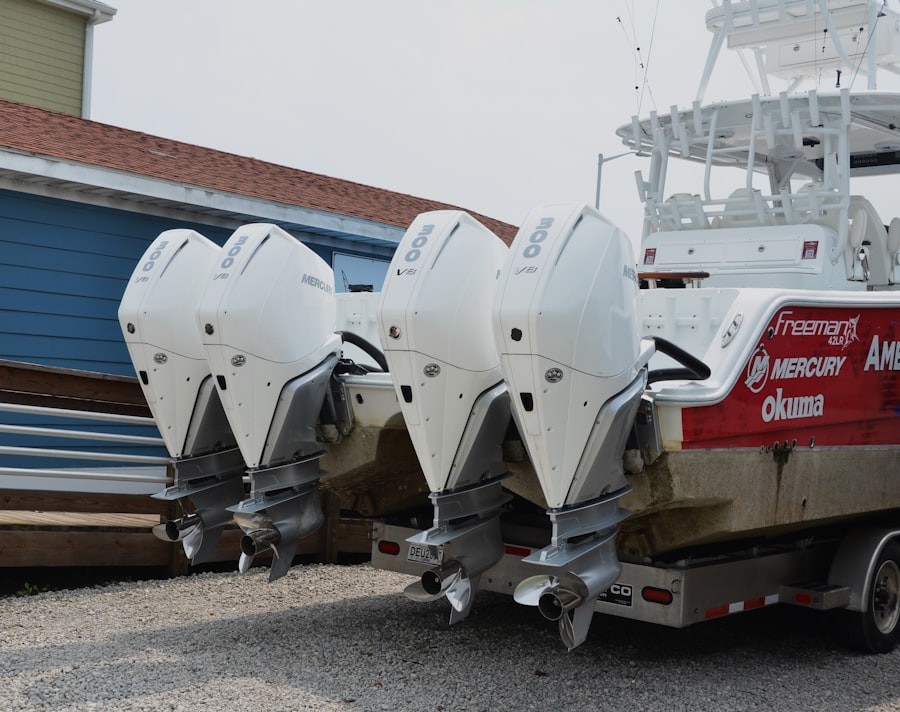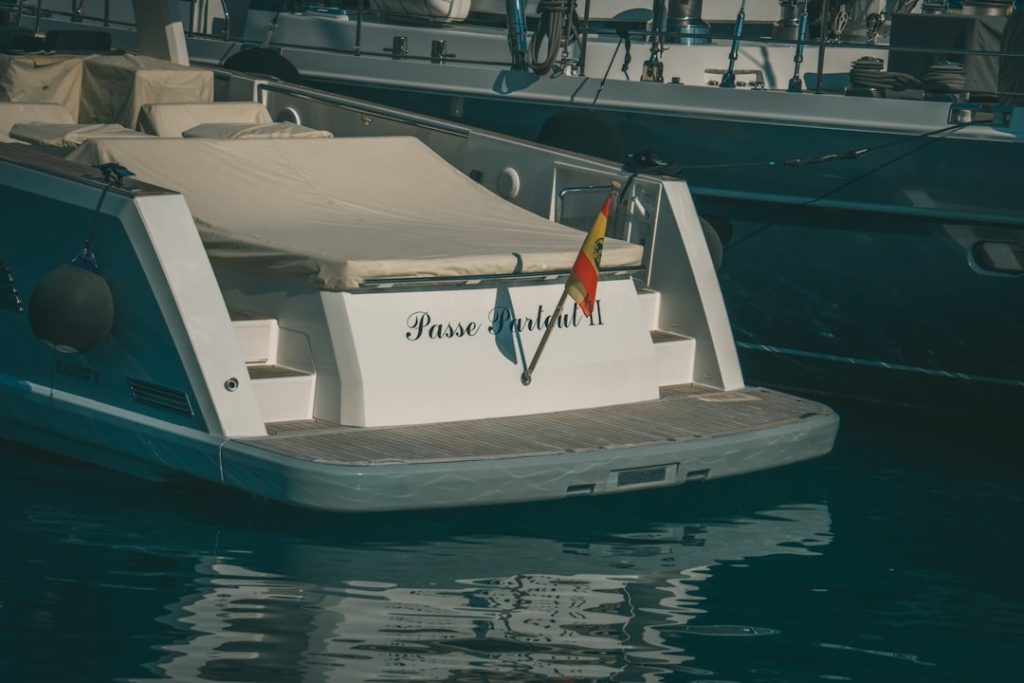Purchasing a used boat motor can be a financially savvy decision for many boat enthusiasts. One of the most significant advantages is the cost savings associated with buying pre-owned equipment. New boat motors can carry hefty price tags, often running into thousands of dollars.
In contrast, a well-maintained used motor can provide similar performance at a fraction of the cost. This financial benefit allows boaters to allocate their budgets toward other essential aspects of boating, such as safety equipment, maintenance supplies, or even upgrades to the boat itself. Moreover, buying a used boat motor can also lead to a more environmentally friendly choice.
The production of new motors involves resource extraction, manufacturing processes, and transportation, all of which contribute to carbon emissions and environmental degradation. By opting for a used motor, you are effectively extending the life cycle of an existing product, thereby reducing waste and minimizing your ecological footprint. This sustainable approach resonates with many boaters who are increasingly aware of their environmental impact and are looking for ways to enjoy their passion while being responsible stewards of nature.
Key Takeaways
- Buying a used boat motor can save money while still providing reliable performance.
- Key factors to consider include motor condition, compatibility, and history.
- Inspecting the motor thoroughly before purchase helps avoid costly repairs.
- Proper maintenance is essential to extend the lifespan of a used boat motor.
- Knowing where to find quality used motors and understanding types aids in making the right choice.
Factors to Consider When Buying a Used Boat Motor
When considering the purchase of a used boat motor, several critical factors come into play that can significantly influence your decision. First and foremost is compatibility with your vessel. Different boats require specific types of motors based on size, weight, and power requirements.
It is essential to consult your boat’s specifications and ensure that the motor you are considering will fit properly and provide adequate power for your intended use. For instance, a small fishing boat may only need a modest outboard motor, while a larger cabin cruiser might require a more powerful inboard engine. Another vital factor is the motor’s condition and history.
Understanding how the motor was used and maintained can provide insight into its reliability and longevity. Requesting maintenance records can reveal whether the previous owner adhered to regular servicing schedules, which is crucial for the motor’s performance. Additionally, knowing whether the motor has been involved in any accidents or sustained significant wear can help you gauge its overall health.
A thorough examination of the motor’s exterior for signs of corrosion, rust, or damage is also essential in assessing its condition before making a purchase.
Where to Find High-Quality Used Boat Motors for Sale

Finding high-quality used boat motors requires some research and exploration of various avenues. One of the most reliable sources is local marine dealerships that specialize in pre-owned equipment. These dealerships often have a selection of inspected and certified used motors, providing buyers with peace of mind regarding their purchase.
Additionally, many dealerships offer warranties or guarantees on their used inventory, which can further enhance buyer confidence. Online marketplaces have also become increasingly popular for sourcing used boat motors. Websites such as Craigslist, eBay, and specialized boating forums allow sellers to list their motors for sale directly to potential buyers.
While these platforms can offer competitive prices, it is crucial to exercise caution and conduct thorough research on both the seller and the motor itself. Engaging with local boating communities through social media groups or forums can also yield valuable leads on available motors from private sellers who may not be advertising them widely.
How to Inspect a Used Boat Motor Before Purchasing
| Inspection Aspect | What to Check | Recommended Tools | Acceptable Condition | Red Flags |
|---|---|---|---|---|
| Visual Inspection | Corrosion, cracks, leaks, and overall cleanliness | Flashlight, magnifying glass | Minimal corrosion, no cracks or leaks, clean exterior | Heavy corrosion, visible cracks, oil or fuel leaks |
| Compression Test | Engine cylinder compression levels | Compression gauge | Consistent readings within manufacturer’s specifications | Low or uneven compression readings |
| Oil Condition | Oil color, presence of metal shavings or water | Oil dipstick, clean cloth | Clear or slightly amber oil, no debris | Milky oil, metal particles, burnt smell |
| Fuel System | Fuel lines, filters, and carburetor condition | Visual inspection, fuel pressure gauge | Clean fuel lines, no cracks, filters not clogged | Cracked lines, clogged filters, fuel leaks |
| Cooling System | Water pump, impeller, and cooling passages | Visual inspection, water flow test | Good water flow, no blockages, impeller intact | Poor water flow, damaged impeller, corrosion |
| Electrical System | Battery, wiring, spark plugs, and ignition | Multimeter, spark tester | Good battery voltage, clean wiring, strong spark | Corroded wires, weak or no spark, dead battery |
| Engine Operation | Starting, idling, acceleration, and noise | Test run on water or trailer | Smooth start, steady idle, no unusual noises | Hard starting, rough idle, knocking or grinding sounds |
| Propeller and Lower Unit | Propeller condition, gear oil, and seals | Visual inspection, gear oil check | No dents or bends, clean gear oil, no leaks | Damaged propeller, milky or dirty gear oil, leaks |
Inspecting a used boat motor before making a purchase is an essential step that can save you from costly repairs down the line. Start by examining the exterior for any visible signs of wear or damage. Look for cracks in the casing, rust spots, or corrosion around the mounting brackets and propeller shaft.
These issues can indicate neglect or exposure to harsh conditions that may affect the motor’s performance. Next, check the motor’s oil and fuel systems. For outboard motors, inspect the lower unit oil for any signs of water intrusion or metal shavings, which could indicate internal damage.
For inboard motors, ensure that the oil is clean and free from contaminants. Additionally, ask about the fuel system’s condition; old fuel lines can deteriorate over time and lead to performance issues. If possible, request a test run of the motor to assess its performance firsthand.
Listen for unusual noises, check for smooth acceleration, and observe how it idles to ensure it operates as expected.
The Importance of Proper Maintenance for Used Boat Motors
Proper maintenance is crucial for ensuring the longevity and reliability of used boat motors. Regular servicing not only helps prevent unexpected breakdowns but also enhances performance and fuel efficiency. For instance, routine oil changes are essential for keeping internal components lubricated and functioning smoothly.
Neglecting this simple task can lead to increased wear and tear on engine parts, ultimately shortening the motor’s lifespan. In addition to oil changes, other maintenance tasks include inspecting and replacing spark plugs, checking fuel filters, and ensuring that cooling systems are functioning correctly. For outboard motors, flushing the engine with fresh water after each use can help prevent saltwater corrosion and buildup of debris in cooling passages.
Keeping up with these maintenance tasks not only preserves the motor’s health but also provides peace of mind when out on the water.
Tips for Finding the Perfect Used Boat Motor for Your Vessel

Finding the perfect used boat motor requires careful consideration and strategic planning. Start by defining your specific needs based on how you intend to use your boat. Are you looking for speed for water sports or reliability for leisurely cruising?
Understanding your requirements will help narrow down your options significantly. Additionally, consider factors such as fuel efficiency and ease of maintenance when evaluating potential motors. Networking within local boating communities can also be beneficial in your search.
Engaging with fellow boaters can provide insights into reputable sellers or upcoming sales events where quality used motors may be available. Attending boat shows or marine expos can also present opportunities to connect with dealers who specialize in pre-owned equipment. Finally, don’t hesitate to negotiate prices; many sellers expect some level of bargaining, especially if you can point out any minor issues during your inspection.
Understanding the Different Types of Used Boat Motors Available
When exploring the market for used boat motors, it is essential to understand the various types available and their respective advantages and disadvantages. Outboard motors are among the most common choices for smaller boats due to their ease of installation and maintenance. They are typically lighter than inboard motors and can be easily removed for repairs or winter storage.
Outboards come in two-stroke and four-stroke varieties; two-stroke engines tend to be lighter and more powerful but are less fuel-efficient compared to their four-stroke counterparts. Inboard motors are another option, particularly suited for larger vessels where space is less of a concern. These engines are installed within the hull of the boat and often provide better stability and weight distribution than outboards.
However, they tend to be more complex in terms of maintenance due to their enclosed nature. Additionally, there are sterndrive motors that combine elements of both outboard and inboard designs; they offer versatility but may require more specialized knowledge for repairs.
The Process of Purchasing a Used Boat Motor
The process of purchasing a used boat motor involves several steps that ensure you make an informed decision while minimizing risks associated with buying pre-owned equipment. Begin by conducting thorough research on different types of motors that fit your vessel’s specifications and your intended use. Once you have identified potential options, start reaching out to sellers or dealerships to gather information about their inventory.
After narrowing down your choices, arrange for inspections and test runs whenever possible. This hands-on approach allows you to assess each motor’s condition directly and helps you gauge how well it performs under real-world conditions. Once you find a motor that meets your criteria, negotiate the price based on your findings during inspection; don’t hesitate to walk away if you feel uncomfortable with the deal.
Finally, ensure that all necessary paperwork is completed correctly before finalizing your purchase. This includes transferring ownership documents and verifying any warranties or guarantees offered by the seller. By following these steps diligently, you can confidently invest in a used boat motor that will serve you well on your aquatic adventures.


